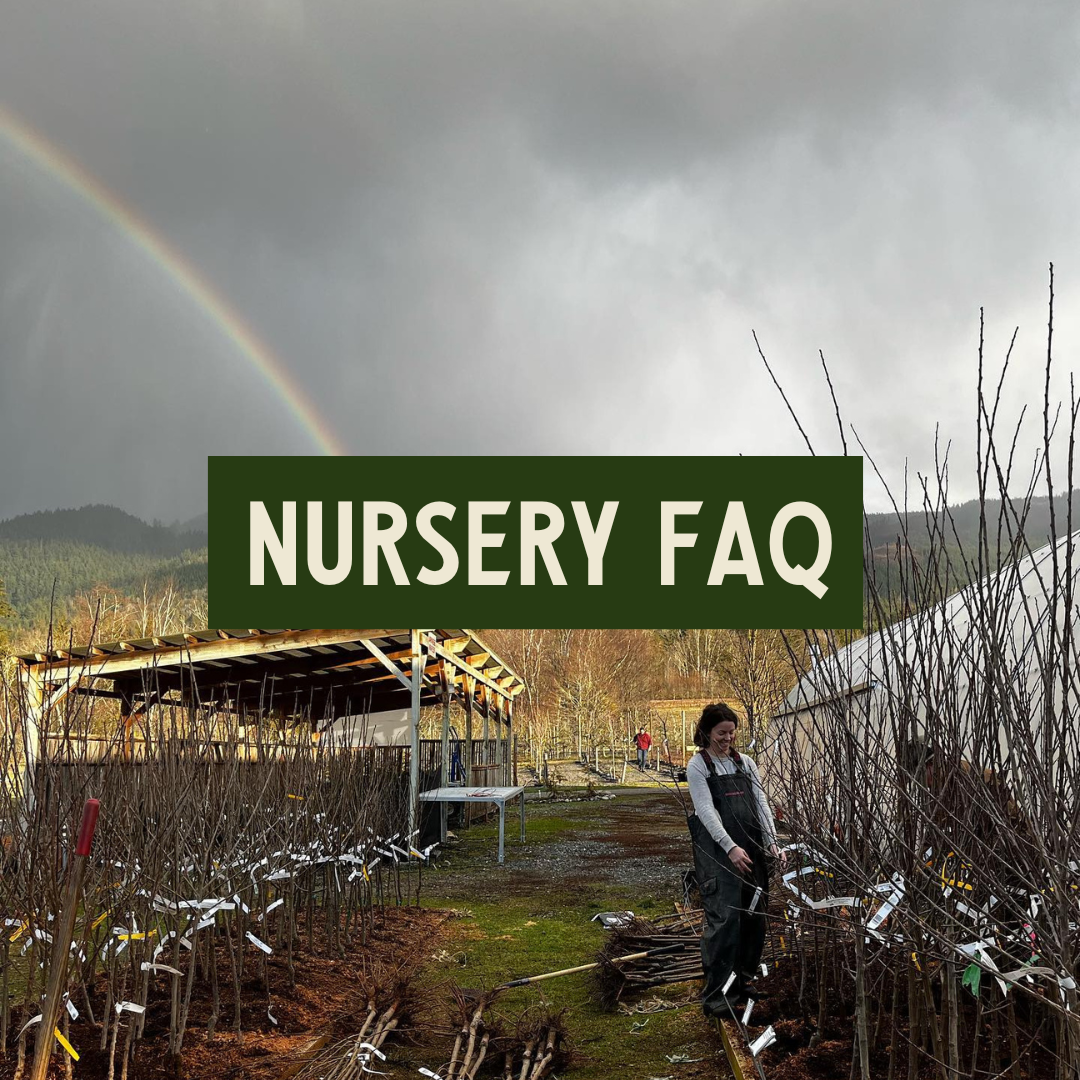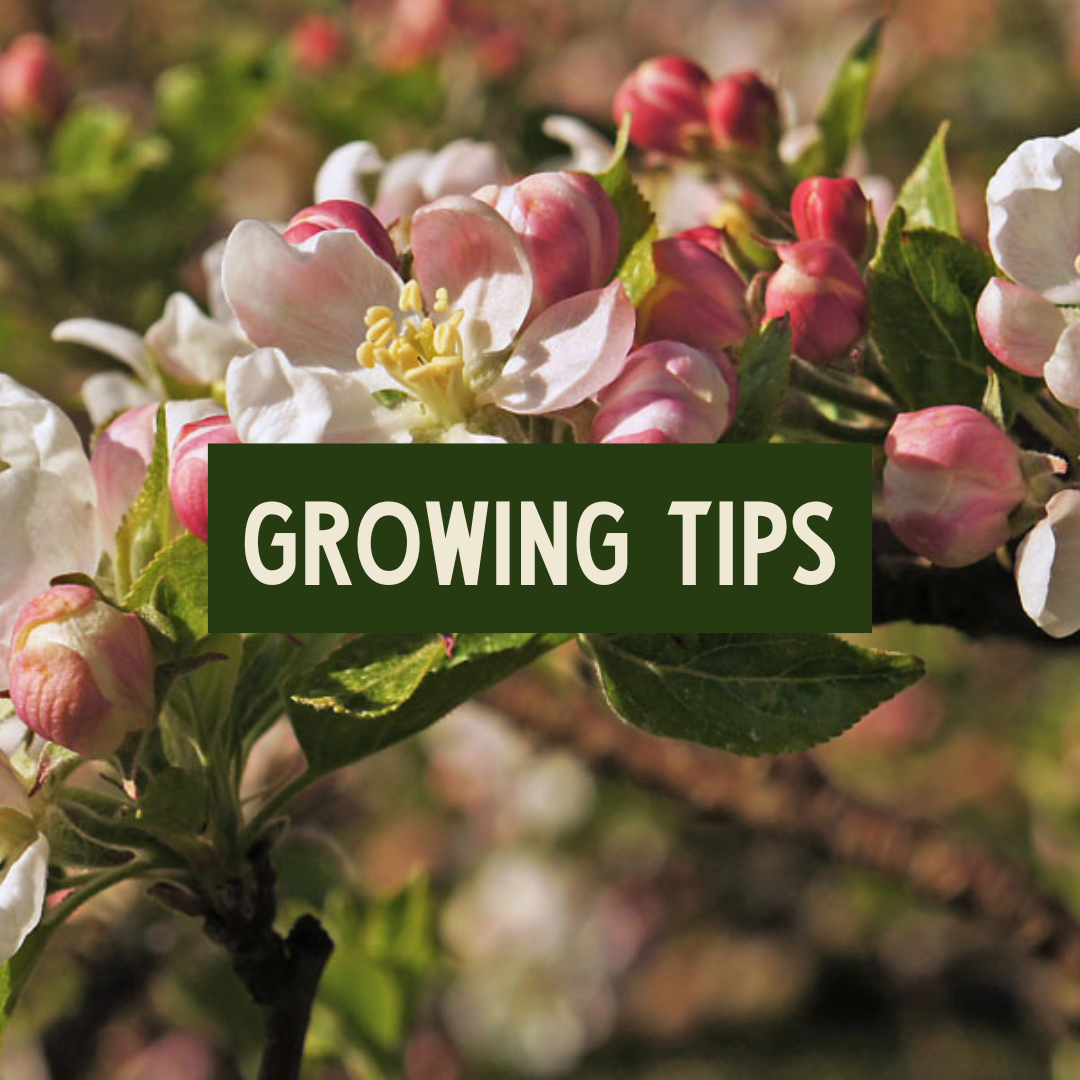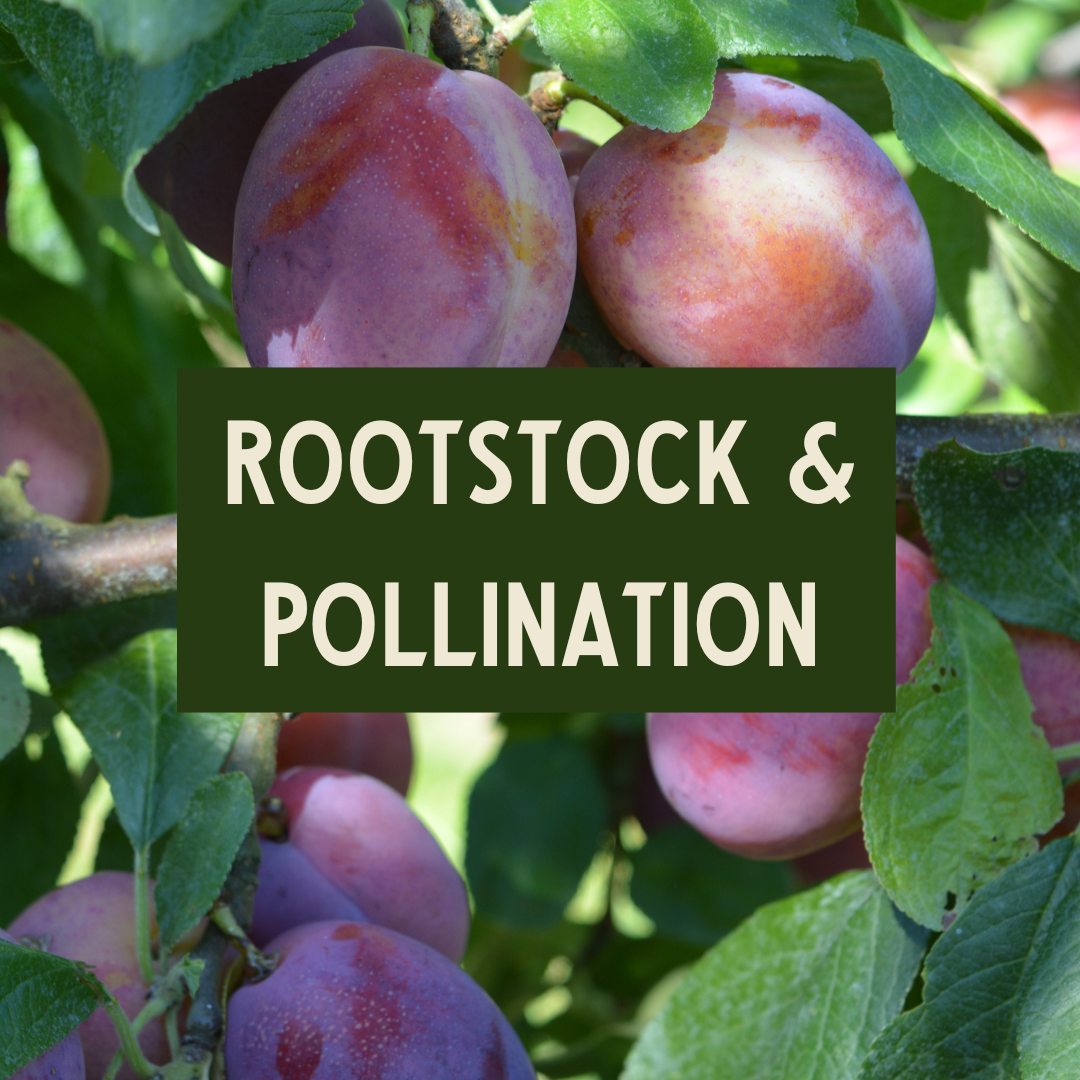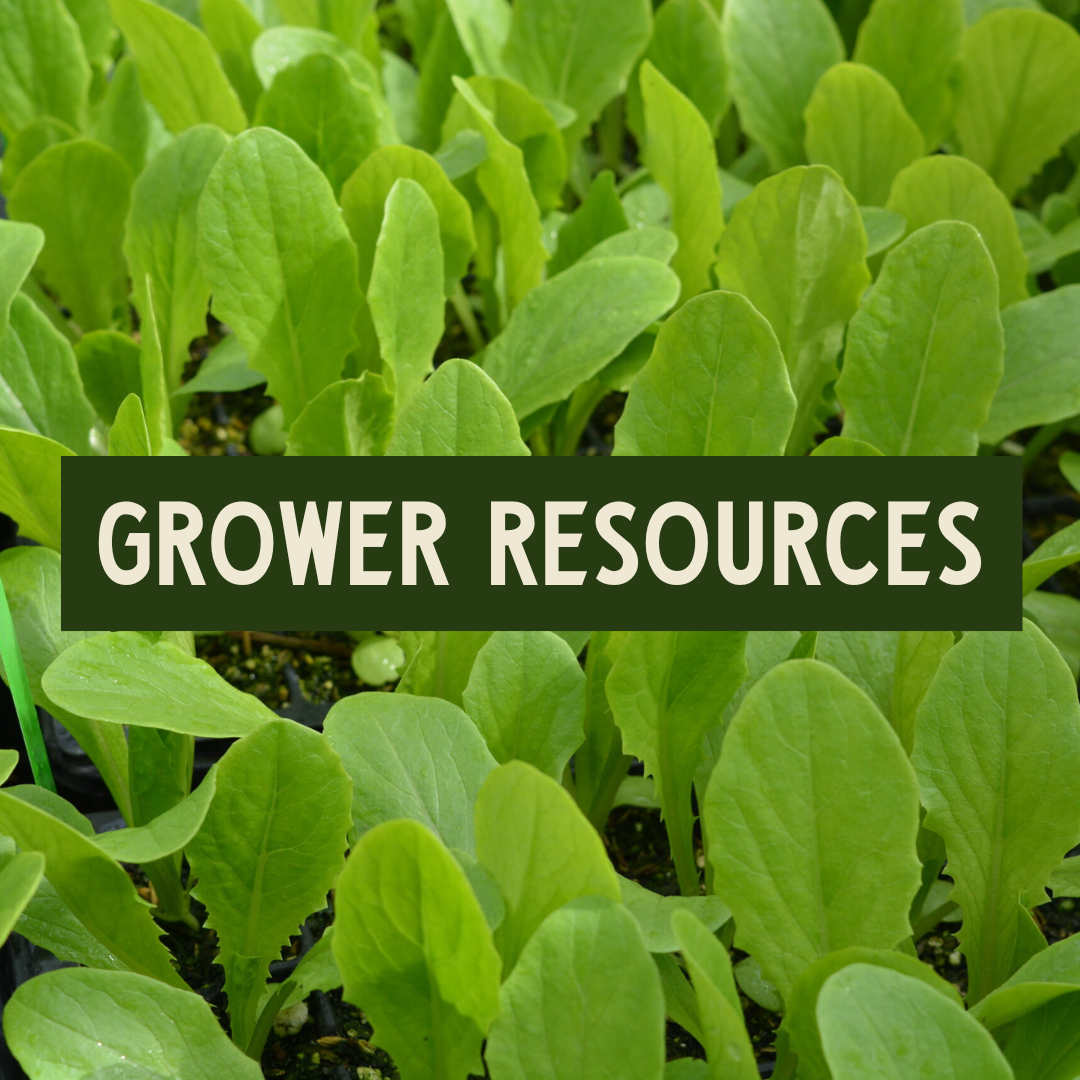Growing Tips & Nursery FAQ
Nursery FAQ
So you want to know more about perennial planting, growing fruit, and taking care of your trees! That’s great, and you’ve found your way to the right place. These are some of the questions we hear a lot, so if you hear yours in here, don’t worry – you’re not alone, and there are answers.
- What rootstock should I choose?
- How far apart can my trees be planted?
- What should I do when I plant my tree(s)?
- Why is my tree not leafing out?
- What’s wrong with my tree?
- When is it time to prune?
- Is it time to spray?
- When can I expect my tree to start producing fruit?
_______________________________________________________________________________________________
What rootstock should I choose?
When you’re choosing a rootstock, you want to think of it as the anchor for your tree. A heavy crop of fruit or a big wind storm could cause your tree to lean or fall over if it doesn’t have a good anchor. The larger the rootstock, the larger the root system. And that larger root system will create a better anchor for your tree, as well as help it access water and nutrients more easily and become more drought tolerant. A smaller root system will require permanent staking.
A larger rootstock will give your tree more “vigor”, though different varieties can also lend vigor characteristics to the tree. For example, a Jonagold or Gravenstein on a dwarf rootstock will be larger than a Honeycrisp on the same rootstock. With more vigor on a larger root system, a tree can grow above deer-browsing height, which will help protect it from getting nibbled. A riding mower can also easily pass under the tree.
Another consideration: on a larger rootstock it can be difficult to keep a tree smaller. It can be done, but it takes some learned pruning skill to work with the vigor of the tree. You can find more information about rootstocks for particular trees here.
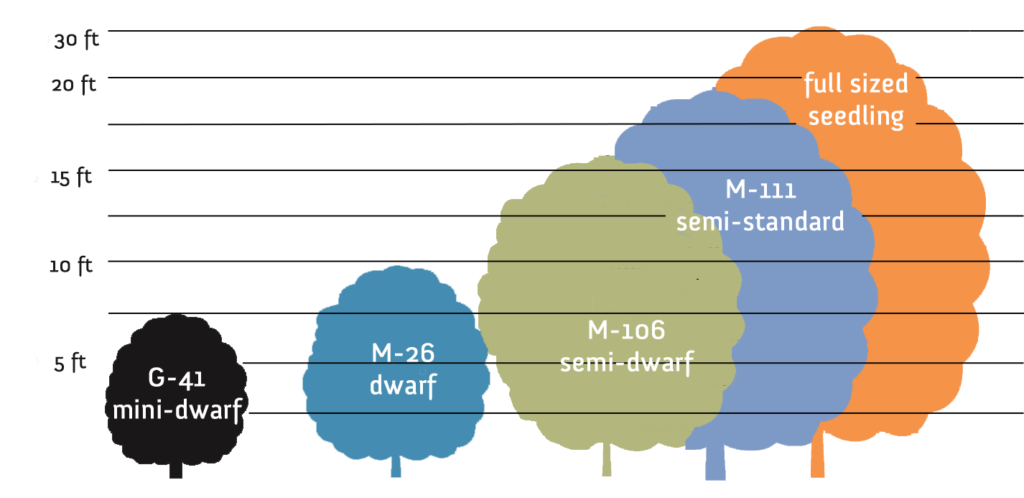
Apple Rootstock Comparison
How far apart can my trees be planted?
Trees should generally be spaced as far as they will be tall, based on the root system they’re on. It’s also nice to give a little more space between trees so it’s easier to move around when pruning and harvesting. For pollination purposes, you want trees that will pollinate each other to be planted within 100′. You can find more information about pollination, and specific trees, here.
What should I do when I plant my tree(s)?
First, think about creating a home for your tree – meaning that your tree needs to be able to live in the conditions you provide it. Check out your soil. Do you have heavy wet soil? Sandy soil? If you are bringing in or amending soil than do not mix more than 20% compost/nice soil into the backfill. If you add more that that, your tree might become rootbound, deciding it doesn’t want to leave this overly comfortable home for the reality of the soil around it. You can find more information about site selection and soil here.
Why is my tree not leafing out?
If you planted a dormant tree this season and it’s not leafing out as you think it should, the first thing to do is the scratch test. Scratch the bark and if the cambium is still green right under that first bark layer then the tree is still alive. If you haven’t pruned the tree yet then do it now – unless it’s a stone fruit and it is going to rain in the next 3 days, then wait until a drier weather window.
Pruning will stimulate dormancy break. New trees that are field grown have much of their root system cut off when dug for sale in the winter. If the top if the tree is large, then the tree will delay dormancy break until the root system is established to a point it can manage providing water and nutrient to the rest of the tree. If we balance the top of the tree (by pruning) with the root system, then it will be able to manage caring for less top growth and will push that growth sooner.
Sometimes field grown plants are dug in winter and cold stored in coolers before being put out for sale which will also delay dormancy break. Remember if that cambium is still green, the tree is still alive, just waiting for the right moment it is ready to open itself to the world.
What’s wrong with my tree?
Send us a photo of the issue in question at info@cloudmountainfarmcenter.org. We also recommend pnwhandbooks.org, one of the best regional resources for diagnosing and treating pest and diseases.
When can I expect my tree to start producing fruit?
Fruit production has a lot to do with pruning. We recommend pruning of all fruit the first year of planting. The following year, prune off most of the fruit. By the third or fourth year, you can start letting your tree produce fruit. Your patience will pay off! Remember to always thin, both for fruit quality and the shape of the tree.
Ripening fruit takes a lot of energy from the tree. The goal for the first year of planting your tree is to get that root system well-established. The root system is basically the immune system of your tree; it has to provide everything the tree needs from the earth. If you let a tree bear fruit the first year, it may take so much energy from the tree that it will stunt its growth and production the following year.
In general, a smaller root system will produce a mature crop sooner than the larger root system.
When is it time to prune?
Pome fruit- apples, pears, quince- can be pruned both while dormant, or while actively growing. Winter, or dormant season pruning allows you to see the framework of the tree.
Stone fruit- peaches, cherries, plums, apricots- are best pruned after breaking dormancy. Pruning just after bloom allows you to still see the tree’s structure, but lowers the risk of bringing the tree out of domancy by pruning. Most stone fruit can be pruned right through harvest. For stone fruit, always prune during dry weather, at least 48 hours of no rain after making pruning cuts. This allows the pruning cuts to naturally heal and lowers the risk of infection.
Is it time to spray?
Be sure you know what you are spraying for and be sure it is the right time. Seasonal weather often dictates when certain pests will emerge. Spraying to prevent disease, spraying to control pests. Often by the time you notice a disease issue it is too late to do much other than cutting out the infected areas. Pests and diseases can build resistance to pesticides. It is important to not over use them and to use them appropriately. Always follow the instructions on the label of the product you are using. Here is more information on disease management for your orchard.
Growing Tips
These growing tips articles were written for Pacific Northwest Gardeners, but much of the information will be relevant for gardeners in other climates as well.
Fruit Trees, Vines, and Shrubs
Getting Started
By Type
Trees |
Vines & Shrubs |
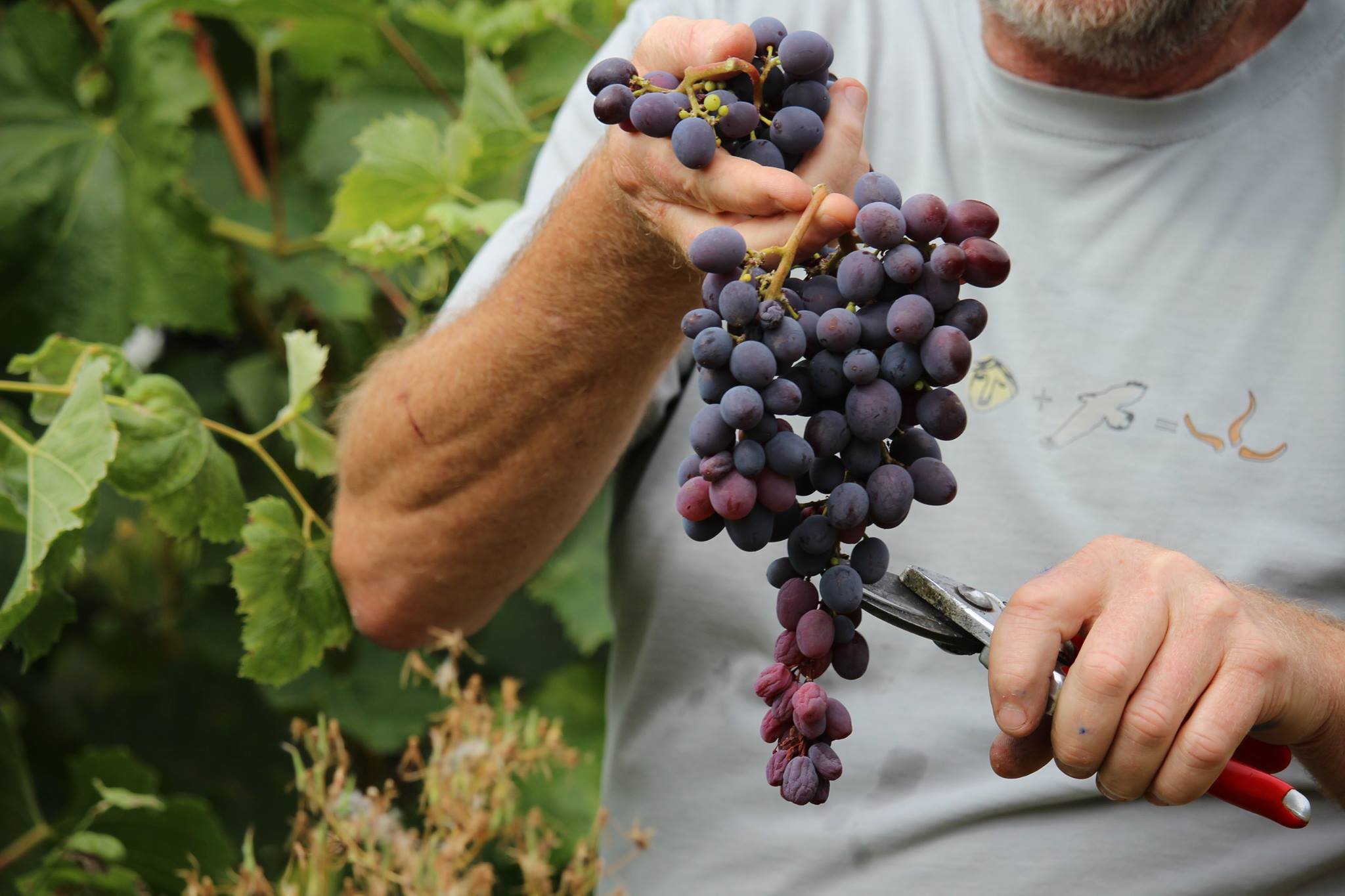
Ornamental Gardening
Plants for Problem Places
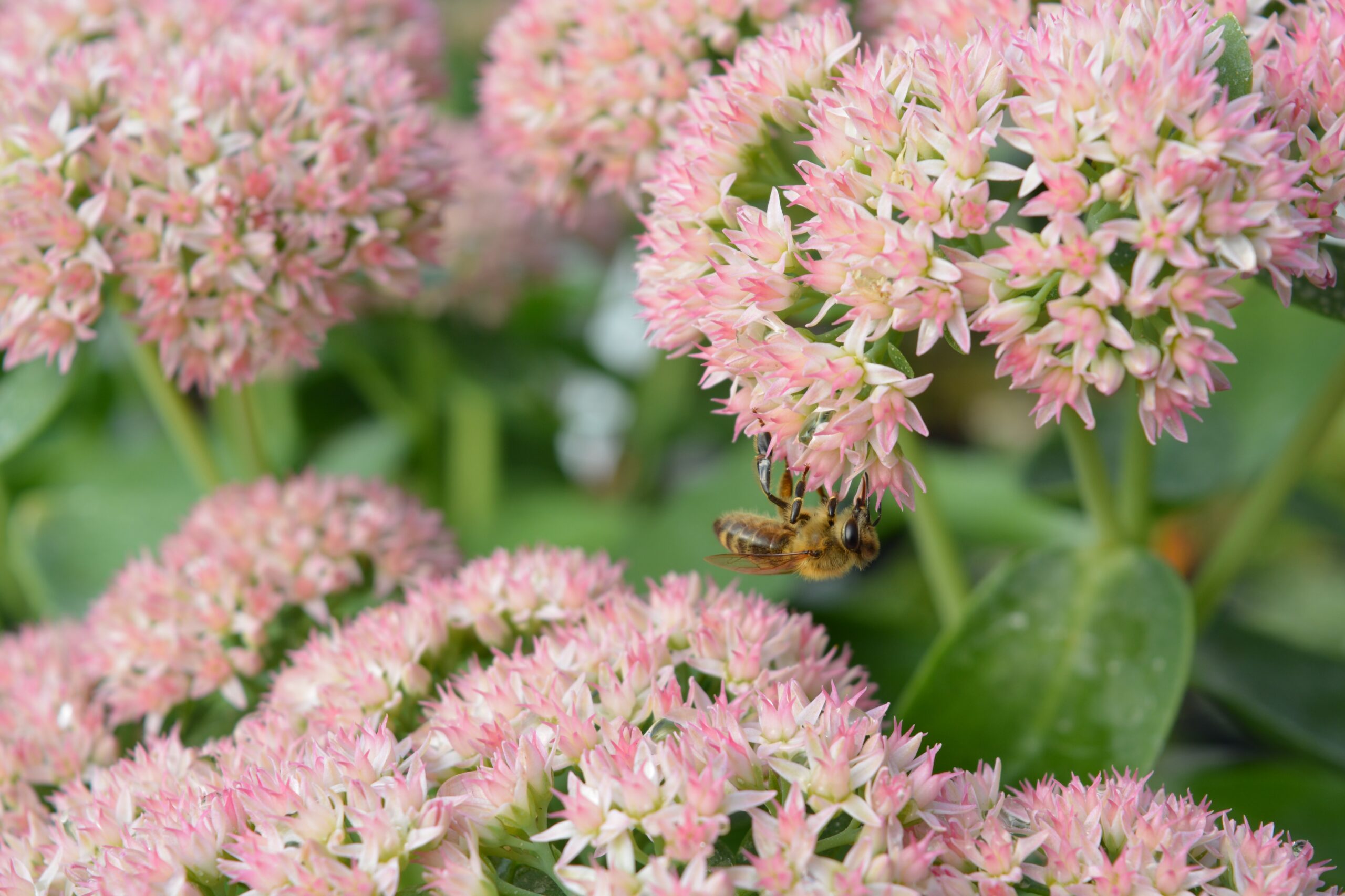
More Fun Information
Vegetable Gardening
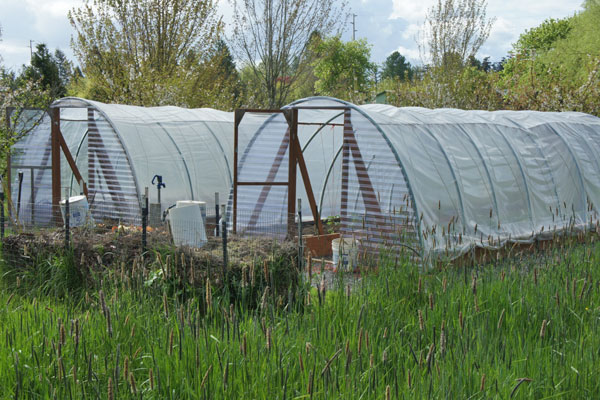
Rootstock & Pollination
Plant Health Guarantee and Refund Policy
Read the guarantee and policy here.
Grower Resources
For decades, Cloud Mountain has utilized our orchards, fields, and vineyards for on-farm variety trials, research, and specialty crop market development. Our crop development evaluations and production trials serve two primary goals:
- to increase and diversify sustainable crop production strategies for organic farmers in Western Washington
- to evaluate and develop organic cropping systems for high value crops that are not typically grown in Western Washington
Beyond our on-farm trials, we support efforts regionally and locally to create resilient, scalable, and efficient production systems that build a vibrant local food economy. Explore our guide to scaling up for wholesale vegetable production in NW Washington here.

